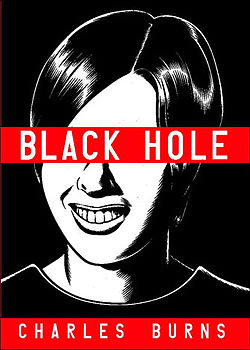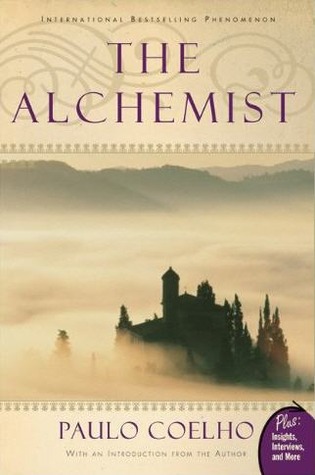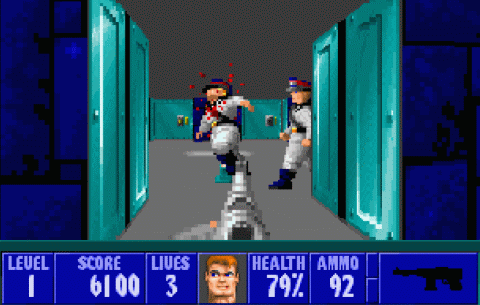 If western culture is a woman, the 60s counterculture is a tramp stamp tattooed on her ass. It was exciting at the time. As she ages, she’s regretting it more and more.
If western culture is a woman, the 60s counterculture is a tramp stamp tattooed on her ass. It was exciting at the time. As she ages, she’s regretting it more and more.
She wanted to expand her mind. She got a drug problem that exists today, dissolving America’s inner cities like psychotropic acid. She wanted an alternative to the sexual mores of Leave it to Beaver. She got a sky-high divorce rate and a generation of kids raised in dysfunctional “all you need is love” relationships. She wanted new ways of seeing the world. She got Charles Manson and Jonestown. As Peter Fonda said, “We blew it.”
Black Hole is a graphic novel about a bunch of flower power children who are going through changes. Ch-ch-changes. As they immanentize the eschaton with acoustic guitars and reefer, their bodies are starting to transform, their skin melting like congealed fat before a blowtorch.
Sometimes the physical deformities are mild, even photogenic. One girl grows a cute demonic tail. Others look like the Elephant Man. One has pustules erupting on his face like the Yellowstone supervolcano. You’d call him pizza-face, but real pizzerias are never so generous with their toppings. Some have deformities that seem to change with unknowable and perhaps eldritch patterns.
Kid after kid comes down with the “bug”. They all become social outcasts, living on the fringes and stealing from convenience stores. One thing the graphic novel hammers home: being an outcast is overrated. Yeah, disconnecting yourself from the normies sounds great and romantic. In practice, it usually just means a lonelier cage.
Charles Burns art and writing is sparse, and leaves much unsaid. Sometimes it seems like there’s unwritten pages (or perhaps unwritten novels) hiding between his panels. That too seems to evoke a period where revelation was meant to come from within.
It’s confusing and not exactly accessible, partly because of its tone and content and partly because it draws a cultural aesthetic that sunk like Atlantis. The one slight umbilicus to the present (or at least the less distant part) is the character construction. It reminds me a little of that 90s style of cartooning: think Daria, or maybe the work of Mike Diana.
Despite its difficulty, Burns has created a comic about a subject that cannot be explained: the non-religious religions and thoughtless thought-processes of the 60s. It’s an absorbing read, though a hard one. We never find out what it was that caused the deformities: my perspective is that this is something that doesn’t need to be explained. All you need to do is witness it, or at least its aftereffects. Compare and contrast with the medieval plague. Was it cats? Rats? A cesspool of sin rising to the nose of a vengeful God? None of its victims came close to understanding it. But it didn’t matter. In the end, they still died from it.
 The Alchemist is about a shepherd who receives a dream from God. It’s always a shepherd. If you’re a pig herder in a fable, then aren’t you just shit out of luck.
The Alchemist is about a shepherd who receives a dream from God. It’s always a shepherd. If you’re a pig herder in a fable, then aren’t you just shit out of luck.
Have you ever installed a sound system in a cheap car? The panels shake. The floorboards hum. Each bass hit is accompanied by a dying asthmatic rattle from your car, because the chassis is thin and nothing is spec’d to exact tolerances. It doesn’t matter how expensive the amplifier, speakers, and subwoofer is: you also need a good, solid car to put them in.
I was constantly aware of rattles and hums while reading the Alchemist. I think Coelho is a cheap car – or perhaps he had a poor translator.
Santiago, a young shepherd in Andalusian Spain, begins a journey to find his Personal Legend (portentously capitalized). He gets around a lot. He goes to Morocco, the Sahara desert, and Egypt, while meeting people such as a crystal merchant, an Englishman, and the king of Jerusalem. These were the strongest parts of the book – going places and doing things. The book has a simplicity and directness when relating day to day events that made me wish it had been about someone else, someone unburdened by a dream from God.
But all through the book there’s a falseness to it. It’s partly undone by its need to be a fable, and partly undone by the fact that Coelho never got me to buy into the story. Santiago rides through the desert on a horse named Author’s Convenience. You soon adapt to the book’s approach, and feel no worry or alarm at anything happening: there’s always an amazing stroke of luck around the corner. A fortuitous meeting. A freak meteorological event. Hard to care about Santiago’s fate when you know Paulo Coelho has a skyhook ready to yank him to safety.
Is this the point? That when you trust your life to fate things work out? Who gives a shit? It’s a fictional book – there’s an author operating the gears here. When Santiago receives a pair of stones that allow him to predict the future, you’re not awed by the wonder and whimsy of the universe. You’re aware that this is a MacGuffin in a preconceived plot and that it’s going to be used by Coelho to cheat.
Perhaps the book cleverly (or unintentionally) breaks the fourth wall. Santiago becomes aware he’s a fictional character, and that his author has teleological ends. I think we’d all be a lot bolder if we knew there was a sympathetic author writing our story. But this isn’t compelling reading.
Descriptions are thin and perfunctory. He journeys through the Sahara, but we don’t hear about grit under his fingernails and the agony of climbing shifting sand dunes. Somewhere in the book he meets an Arab girl called Fatima, who he vows to marry once he fulfills his Personal Legend. I don’t recall the part where they discussed the fact that he’d have to convert: Muslim women cannot marry unbelievers.
The book is based off an old Yiddish fable, about a Jew who has a dream about a fortune buried somewhere in Venice. He travels there, digs fruitlessly, until eventually he meets a man who scorns him for his foolishness. “Why, for years I’ve been dreaming of some nonsense about Jew with massive fortune under the basement of his house!”
It’s an interesting premise for a book: a treasure right under one’s nose that you’d have to go around the world to find. Maybe someone is actually searching for treasure right now. If you’re that person, put this book down. It isn’t it.
 The Biblical Urheimat of 3D shooting games. Asking if it’s fun is like asking if the Hammurabi Codex is good writing: it’s transcended such things.
The Biblical Urheimat of 3D shooting games. Asking if it’s fun is like asking if the Hammurabi Codex is good writing: it’s transcended such things.
In 1992, Wolfenstein 3D changed everything. It made people nauseous. And upset. There were violent games before, but their lack of immersion softened the blow. “You” didn’t rip out spines in Mortal Kombat 2, a sprite on the screen did. But from a first person perspective (with a phallic gun-barrel intruding into your viewfield), the illusion breaks. In this game, you are definitely the one pulling the trigger.
Nobody who’s played Wolfenstein 3D could be seriously offended by it. The Nazi element is played for kitsch and camp, this is Springtime for Hitler: The Game. And the game’s sense of realism is shallow at best: the corners are all 90 degree angles, the ceilings and floors lack textures, the repetitive environments make you feel like a rat in a maze, etc. The massive body count has a nugatory effect: after a few hours, shooting someone is as shocking as the 300th “fuck” on a rap album.
Gameplay kicks off with a screen saying “GET PSYCHED!” and this captures the game’s flavour: a crazy sugar rush. You charge around turning Wehrmächte into Swiss cheese. You’re not exactly thinking “only the dead have seen the end of war”.
Wolfenstein 3D is an arcade game. The more you play WOLF3D (as the DOS executable was called), the more it feels like it belongs on a CPS-2 arcade cabinet with wadded-up gum jamming the controls. You have lives, and a high score. All that’s missing is B.J. Blazkowicz telling you to insert a quarter. Modern 3D shooters aspire to be on the cutting edge. There’s the feeling that a game with revolutionary graphics needs to be revolutionary along other axes, too. Wolfenstein 3D remains (as it did at the time of release) stuck in the past.
There’s lots of fun goodies herein. A hidden “Call Apogee say ‘AARDWOLF'” message, remnants of an aborted contest that was immediately made pointless by fan-made data viewing programs. A Pacman level. Another level made entirely out of swastikas. The statement “This game is rated PC-13, for ‘Profound Carnage'”. A naff and entertaining battle against Adolf Hitler. A episodes 4-6 are called Nocturnal Missions. Barring Rise of the Triad, this is perhaps the most overtly comedic FPS until the release of Duke Nukem 3D (Ken’s Labyrinth was too autistic to be funny).
Little map design is possible with such a limited engine. You wander mazes and shoot groups of enemies. While Doom would give the player new and varied things in its later levels, WOLF3D has nowhere to go except harder mazes and larger groups of enemies. At a certain point, your brain becomes bored, and starts craving more stimulation. You could argue that the game reinforces the social message that mass murder is boring.
Even the game’s technological wizardry smacks of Uri Geller. Just fire up Ultima Underworld, which came out six months earlier, and had angled walls, textured ceilings, slopes, look up/down, swimmable water, etc. Not a fair comparison, since that game was developed over years next to this one’s months. And Wolfenstein 3D’s engine is faster and leaner. Too bad that equals a fast and lean journey through Legoland.
Wolfenstein 3D is a dated experience with immense historical. I can’t imagine myself ever replaying Wolfenstein 3D the same way I play Doom. But though I don’t play it, I can’t ignore it.
 If western culture is a woman, the 60s counterculture is a tramp stamp tattooed on her ass. It was exciting at the time. As she ages, she’s regretting it more and more.
If western culture is a woman, the 60s counterculture is a tramp stamp tattooed on her ass. It was exciting at the time. As she ages, she’s regretting it more and more.

